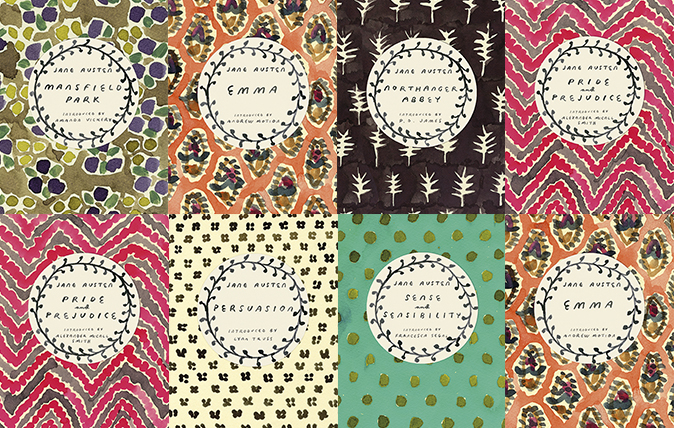The true mark of genius of Jane Austen's Persuasion? Even when its bad, it's still pretty good
Even costume drama fatigue can't rob Jane Austen's Persuasion of its power, says Jack Watkins


An audible groan rose up in certain quarters at news of the dramatisation of yet another Jane Austen novel. What, not Austen again? The latest film of Persuasion was launched on Netflix this month to decidedly lukewarm reviews, although these could reasonably be put down to critic fatigue and wonderment at why the works of many other classic authors remain so neglected. Undeniably, however, Austen remains box office. Prof John Mullan, an authority on the 18th- and 19th-century novel, asserts that only Shakespeare and Dickens among other English writers ‘can rival her continuing international appeal’.
At least Persuasion trails behind Pride and Prejudice and Emma in terms of Austen-adaptation overkill. Sometimes described as her ‘autumn novel’, it is more sombre in tone than Northanger Abbey, with which it was jointly published in December 1817, five months after her death.
"That young lady had a talent for describing the involvements and feelings and characters of ordinary life which is to me the most wonderful I ever met with… What a pity such a gifted creature died so early" — Sir Walter Scott
Milder in its irony, its unmarried heroine is 27-year-old Anne Elliot, almost a geriatric by the standards of the age. It follows the second chance of love that comes her way after she is reacquainted with Frederick Wentworth, a young naval officer to whom she was once engaged, until she was persuaded to end the relationship because of his perceived lack of prospects. Alongside the usual Austen concerns of class and snobbery, other themes include the sadness of unrequited love, reawakening love and the passage of time.
It has been suggested that Persuasion is the Austen novel in which the voice and vision of its heroine most accords with that of the author herself. Ann Barrett, a friend of Austen’s, said after her death that ‘Anne… was herself; her enthusiasm for the navy, and her perfect unselfishness reflect her completely’.

Certainly, the writer’s deep respect for the Royal Navy is reflected in Anne’s statement: ‘The navy, I think, who have done so much for us, have at least an equal claim with any other set of men, for all the comforts and all the privileges which any home can give.’
More interestingly, in terms of the heroine’s fortunes in love, Virginia Woolf felt that Persuasion was proof of ‘not merely the biographical fact that Jane Austen had loved, but the aesthetic fact that she was no longer afraid to say so. Experience, when it was of a serious kind, had to sink very deep, and to be thoroughly disinfected by the passage of time, before she allowed herself to deal with it in fiction’.
"Persuasion is Austen’s saddest and most impassioned novel, and in its blend of the public and the personal it explored both the anguish of silence and the value of hope" — Robert Morrison, author of ‘The Regency Revolution’
According to Austen’s sister Cassandra, she began writing the novel in August 1815, completing the first draft 12 months later. However, she was unhappy with the book’s ending, believing it ‘tame and flat’, and, although she revised it by writing two new chapters, eventually completing work in August 1816, she made no further moves to have the book published. This has led to conjecture over whether a further revision was intended. However, in a letter to her beloved niece Fanny Knight, whom she regarded as ‘almost another sister’, in March 1817, she gave notice that she had another novel ready for publication ‘which may perhaps appear twelvemonths hence’, and drew attention to the character of Anne with the comment: ‘You may perhaps like the heroine, as she is almost too good for me.’
Exquisite houses, the beauty of Nature, and how to get the most from your life, straight to your inbox.
"Jane Austen was a complete and most sensible lady, but a very incomplete, and rather insensible (nor senseless) woman. If this is heresy, I cannot help it" — Charlotte Brontë
The working title for the novel was originally The Elliots, only for it to be, probably more fittingly, changed after her death to Persuasion by her brother, Henry Austen. (Northanger Abbey was also a renaming from its earlier working titles of Susan and Miss Catherine.) Significantly, when the four-volume set of Northanger Abbey and Persuasion was published by John Murray, a biographical note written by Henry was included that, for the first time, named Jane as the author of the novels, as well as of Sense and Sensibility, Pride and Prejudice, Mansfield Park and Emma.
Hampshire or Bath?
Edward Austen Knight’s personal copy of the first-edition, four-volume set of Northanger Abbey and Persuasion forms part of the collection at Jane Austen’s House, in Chawton, Hampshire. Austen (1775–1817) was born a few miles away at Steventon, the daughter of a rector, but her social world subsequently extended beyond rural Hampshire to encompass London, Southampton, Clifton and Bath. The latter was a key location in Persuasion, where Anne renews her acquaintance with Frederick, now Captain, Wentworth.

Anne had little liking for the place, having ‘persisted in a very determined, though very silent disinclination for Bath’. The author also held mixed feelings about the town and the artificiality of its social life. Chawton was much more to her taste: she spent the last eight years of her life there, writing and revising her novels in the family parlour. The Grade I-listed house is now a museum and place of pilgrimage for Austen followers.

Jane Austen’s six most-famous novels, summed up in 10 words each
Novels in a nutshell.
Jack Watkins has written on conservation and Nature for The Independent, The Guardian and The Daily Telegraph. He also writes about lost London, history, ghosts — and on early rock 'n' roll, soul and the neglected art of crooning for various music magazines
